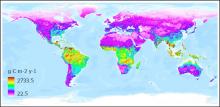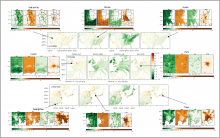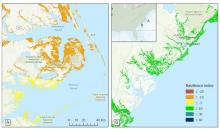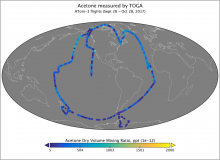ATom: Aerosol Measurements from SOAP, 2018
Figure 1. (a) Aerosol extinction calculated using Mie theory from composition-resolved size distributions plotted as a function of measured extinction from the SOAP cavity ring-down spectrometer during the ATom-4 campaign, showing representative error bars. (b) Calculated aerosol absorption and measured absorption from the SOAP photoacoustic spectrometer for cases when absorption >2 *10-6 m-1 (2x the detection limit).









